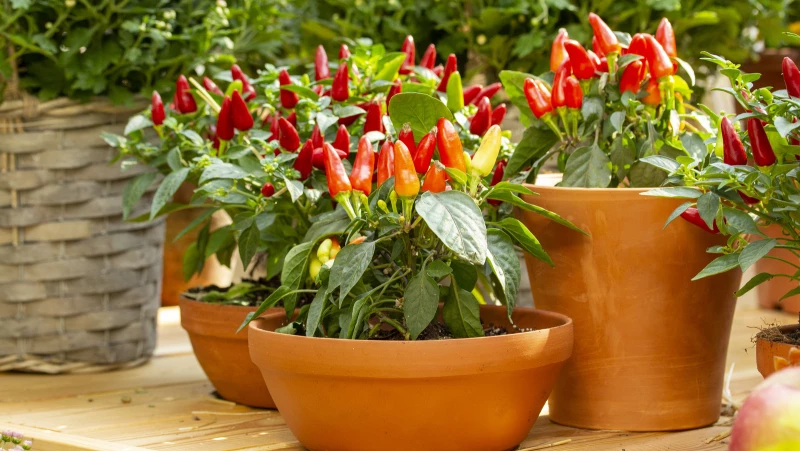Starting your own pepper plants from seed can be a satisfying experience, and ensuring they have a healthy beginning increases their chances of a successful and fruitful season. Although it might be tempting to fertilize your peppers as soon as they start sprouting, it is advisable to hold off for a little while. Typically, it is recommended to start fertilizing your pepper seedlings once the first set of true leaves have started to develop.
Peppers, belonging to the Capsicum genus, encompass 5 species of domesticated varieties. The commonly grown ones like bells, jalapenos, and poblanos fall under the Capsicum annuum species, while the spicier Capsicum chinense species includes favorites such as habaneros and the notorious Carolina reaper. Given their preference for warm temperatures and a lengthy growing season, most growers kickstart the process by planting seeds indoors rather than directly in the soil. Whether it's bell peppers or fiery habaneros, ensuring a warm environment for your seed trays, possibly with a heat mat, and providing adequate light post-germination is crucial. Pepper seedlings thrive in a moist but not waterlogged medium and benefit from a gentle breeze from a fan to bolster stem strength through improved air circulation.
When to fertilize your pepper seedlings
Some seed starting mixes come with added fertilizer, but many are composed solely of mediums like peat or coco coir without extra nutrients for seedlings. Even those with added nutrients often contain minimal amounts to prevent the growth of damping off fungus, a seedling-killing disease. The primary role of seed starting soil mix is to offer a loose and airy medium for the roots to establish and expand easily. Always check the mix label to avoid inadvertently overfertilizing your pepper plants.
Pepper seeds, like all seeds, carry the necessary nutrients for initial plant growth. These nutrients sustain the developing plant until the emergence of seed leaves or cotyledons capable of photosynthesis. As young pepper seedlings draw nutrients from the seed, there's no urgency to fertilize right away. It's advisable to introduce fertilizer only when the first true leaves emerge, typically around a week after the seed leaves appear.
How to fertilize pepper seedlings
For young seedlings, a liquid fertilizer is often the preferred choice among the many options available. Whether it's a traditional liquid fertilizer or an organic alternative like fish emulsion, the fishy odor may not be suitable for indoor use. It's recommended to dilute the fertilizer to a quarter of the strength indicated on the bottle and apply it about once a week.
After the threat of frost has passed and nighttime temperatures stay above 50 degrees Fahrenheit, it's time to prepare for transplanting your pepper plants. Remember to acclimate your plants gradually to prevent transplant shock and ensure they are well-watered. Conduct a soil test for your pepper bed to avoid unintentionally over or under-fertilizing your plants throughout the growing season. Pepper plants are considered moderate feeders, needing less fertilizer compared to other vegetables. Typically, they benefit from fertilization during transplanting and again after fruit set.









